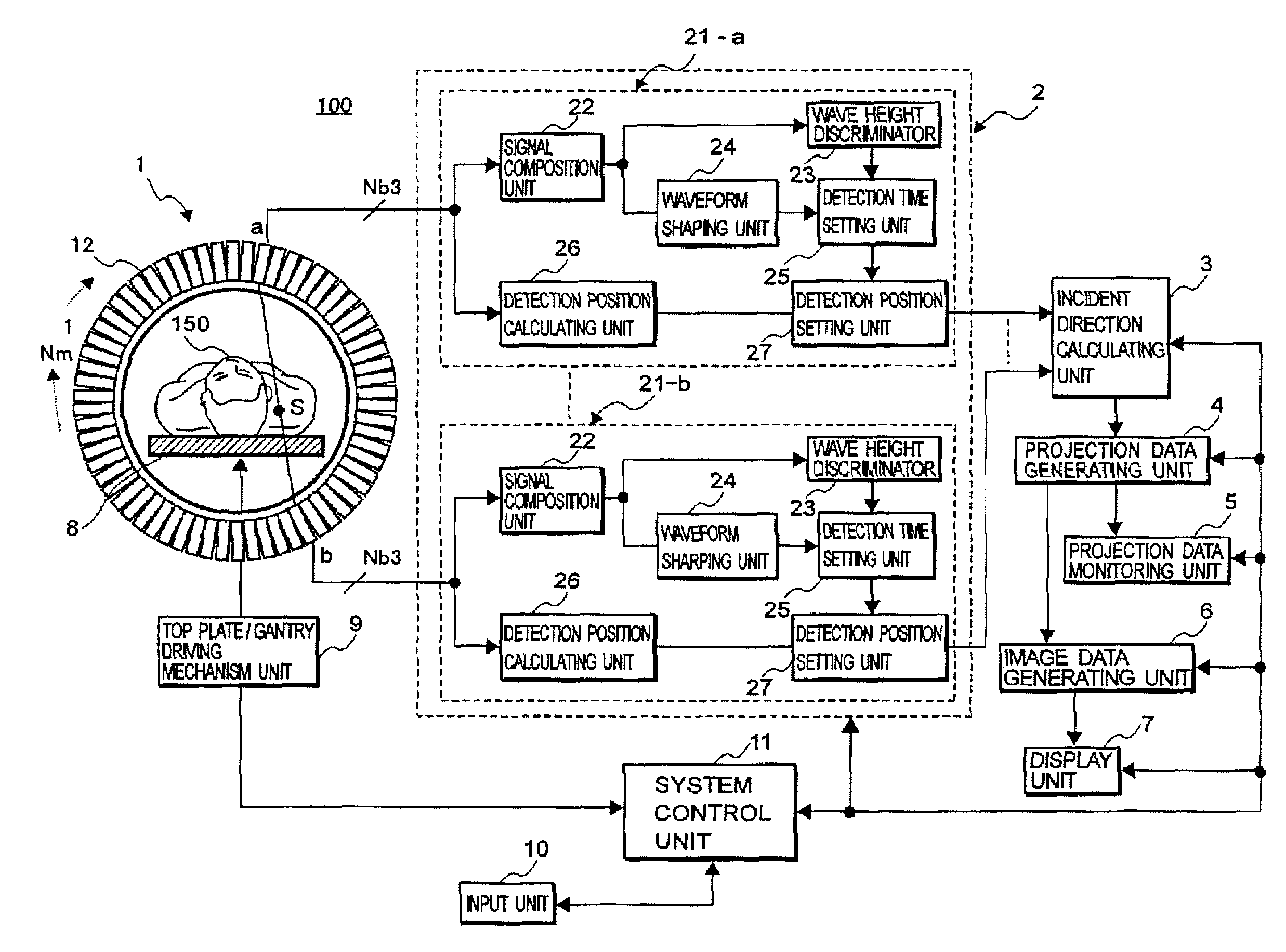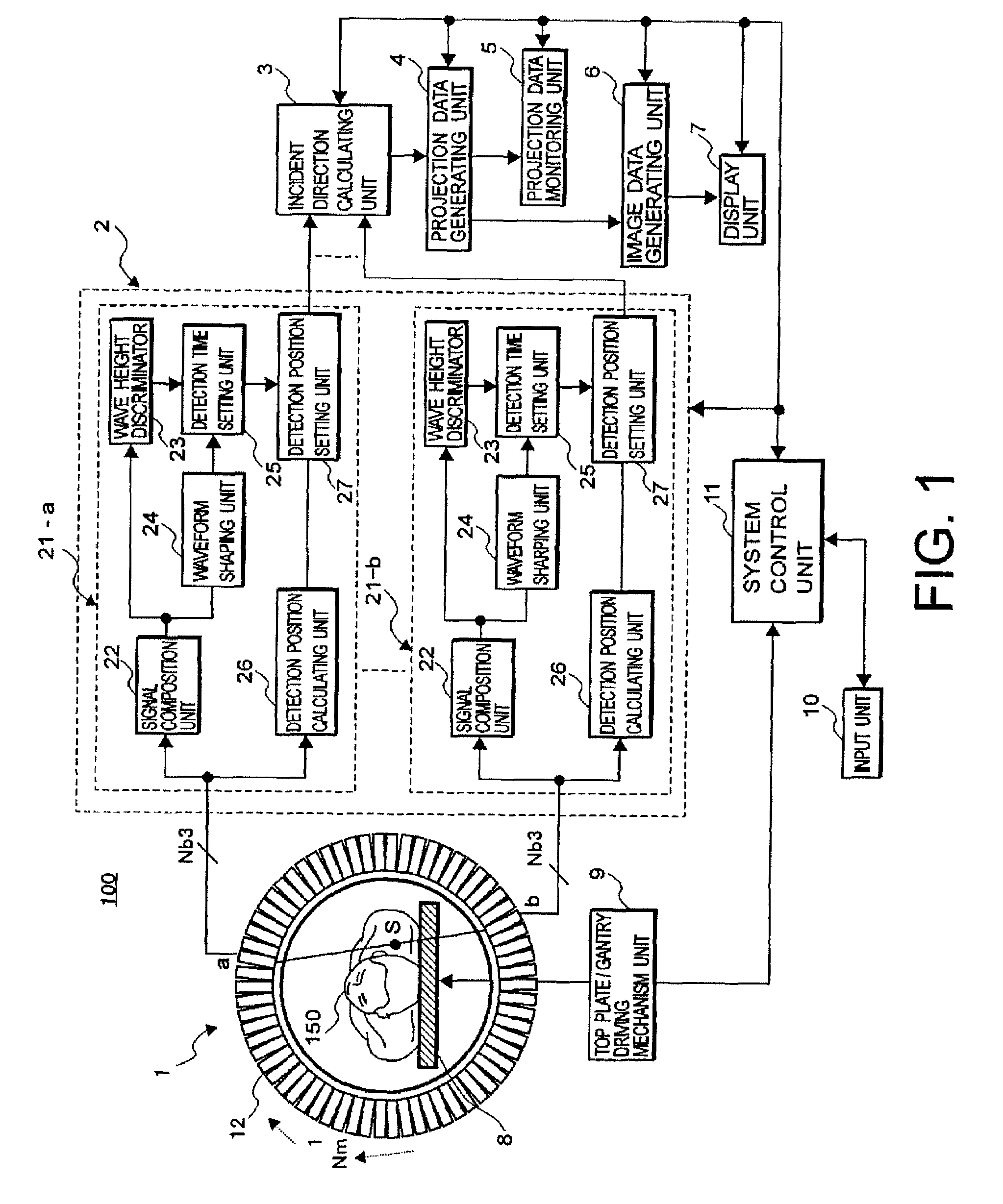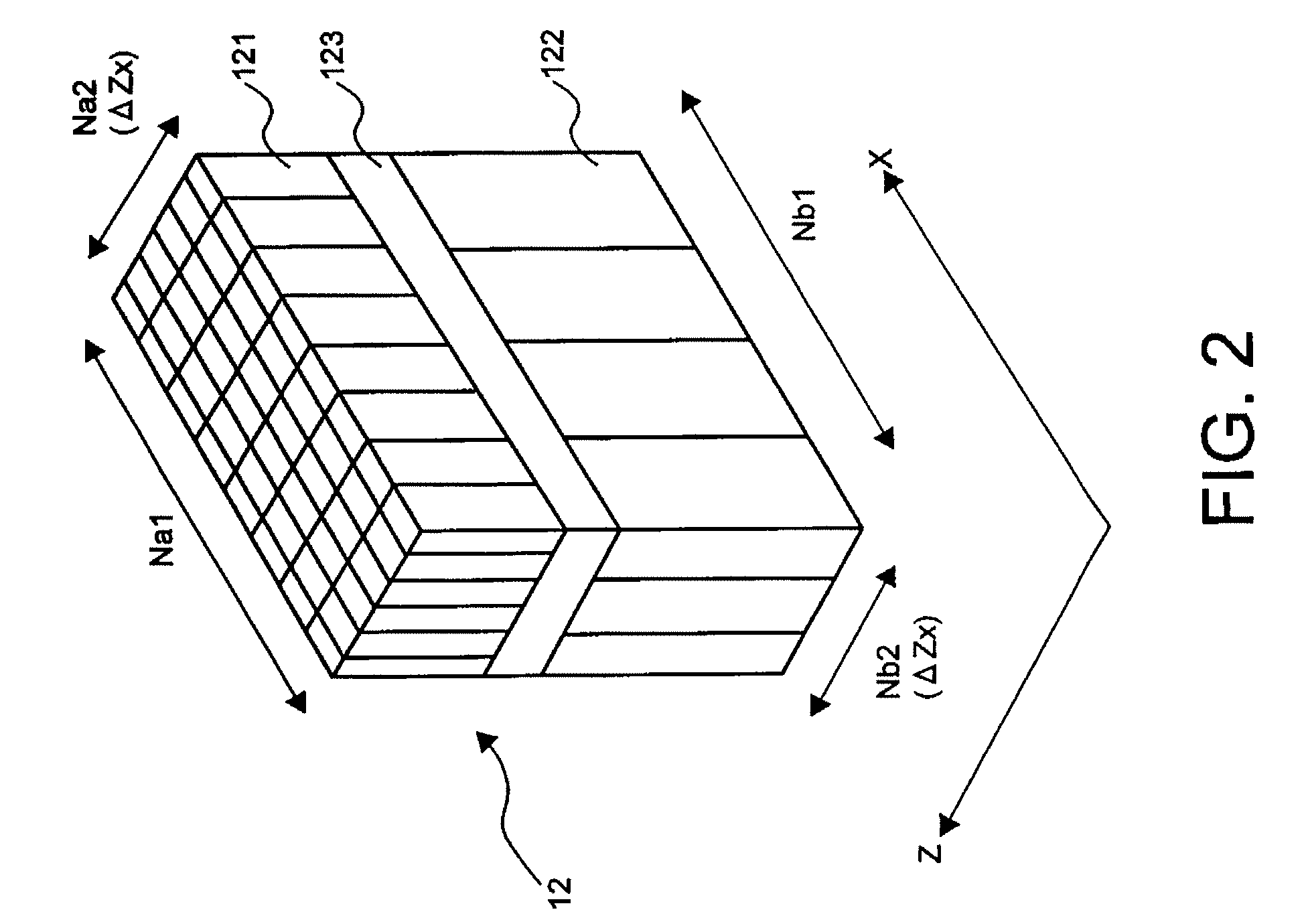Nuclear medicine imaging apparatus and a method for generating image data
a nuclear medicine and imaging apparatus technology, applied in the direction of instruments, radiation measurement, measurement devices, etc., can solve the problems of deteriorating image quality, taking more than twenty minutes, and reducing the burden so as to improve examination efficiency and reduce burdens on objects and/or operators
- Summary
- Abstract
- Description
- Claims
- Application Information
AI Technical Summary
Benefits of technology
Problems solved by technology
Method used
Image
Examples
Embodiment Construction
[0045]With reference to the following FIGS. 1-8, embodiments consistent with the present invention will be explained. As an exemplary embodiment according to the nuclear medicine imaging apparatus consistent with the present invention, it will be explained as to a PET apparatus. Of course, the present invention is applicable to nuclear medicine imaging apparatus for other image diagnosis apparatus, such as a SPECT apparatus or a composite type PET apparatus with an X-ray CT apparatus.
[0046]An object (patient) has previously been administered (injected) a radioactive isotope before being positioned into a nuclear medicine imaging apparatus consistent with the present invention. In the nuclear medicine imaging apparatus, during a prescribed monitoring time period, a pair of gamma-rays emitted from a diagnostic portion in the patient with the radioactive isotope is successively detected by a detector of a ring-like configuration that is comprised of a plurality of detector modules. Bas...
PUM
 Login to View More
Login to View More Abstract
Description
Claims
Application Information
 Login to View More
Login to View More - R&D
- Intellectual Property
- Life Sciences
- Materials
- Tech Scout
- Unparalleled Data Quality
- Higher Quality Content
- 60% Fewer Hallucinations
Browse by: Latest US Patents, China's latest patents, Technical Efficacy Thesaurus, Application Domain, Technology Topic, Popular Technical Reports.
© 2025 PatSnap. All rights reserved.Legal|Privacy policy|Modern Slavery Act Transparency Statement|Sitemap|About US| Contact US: help@patsnap.com



